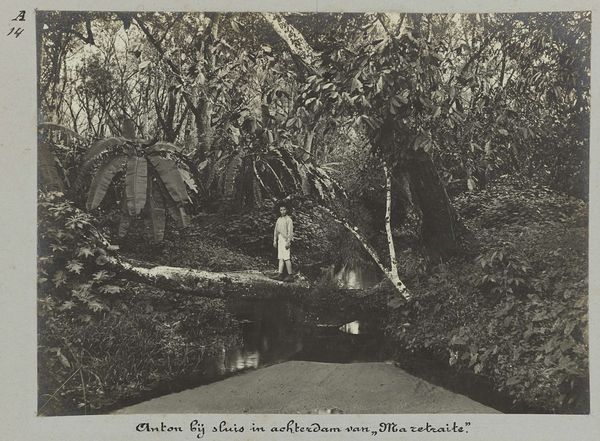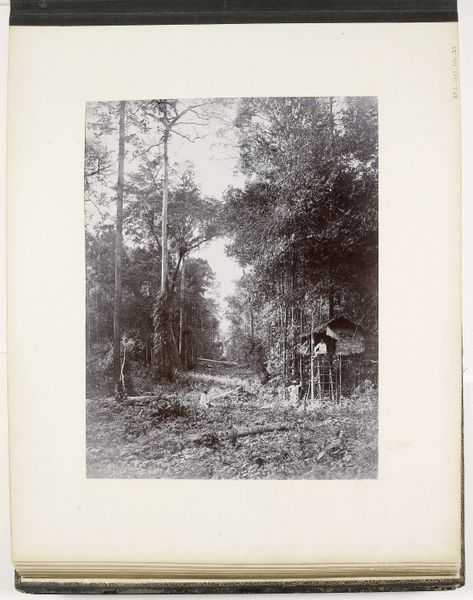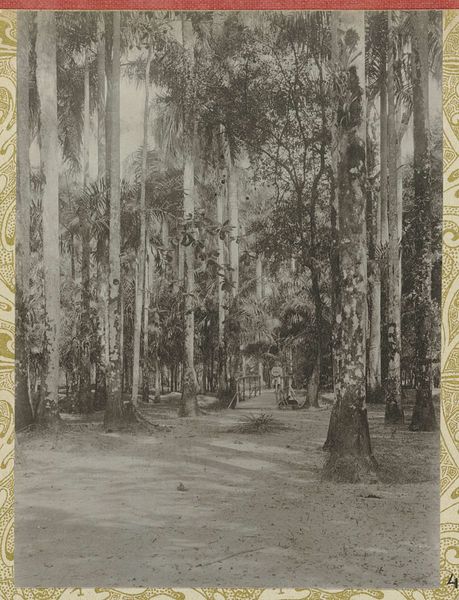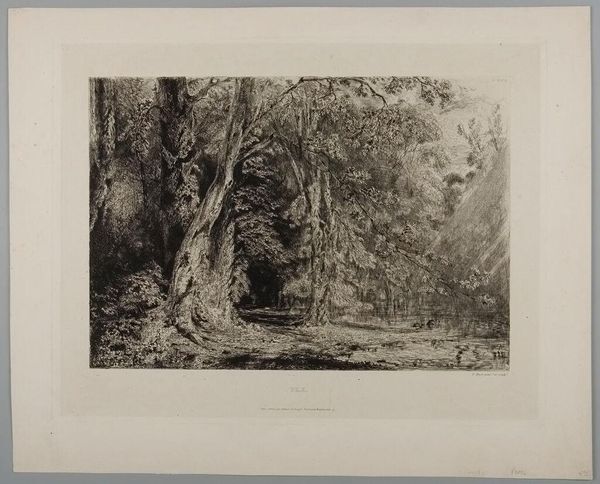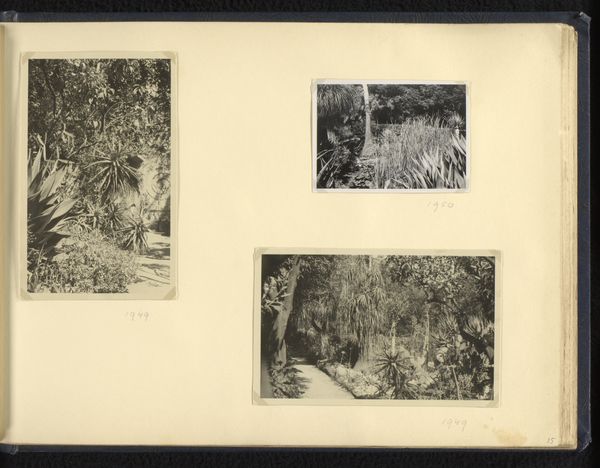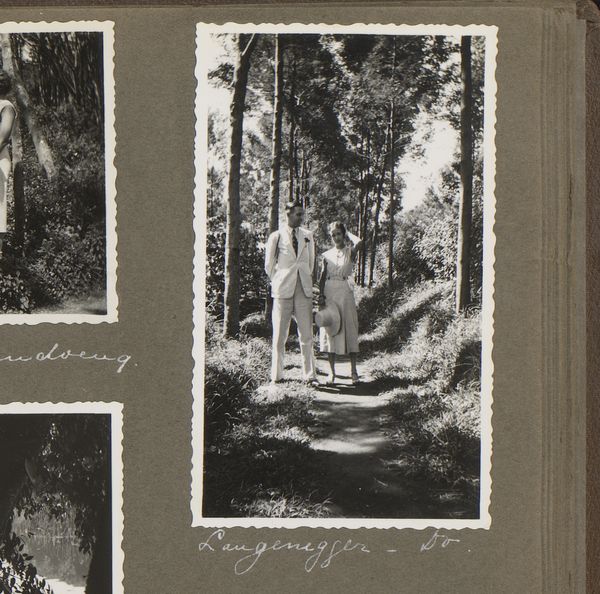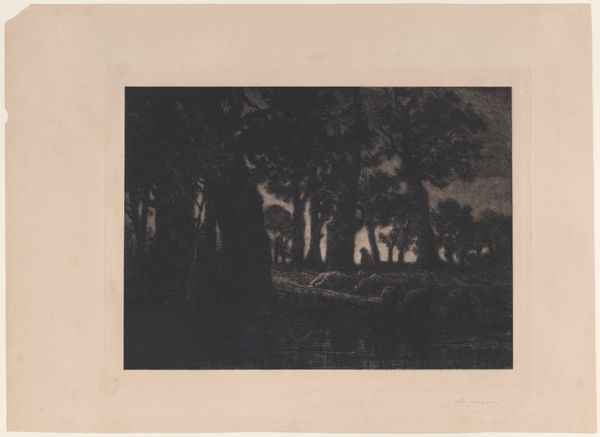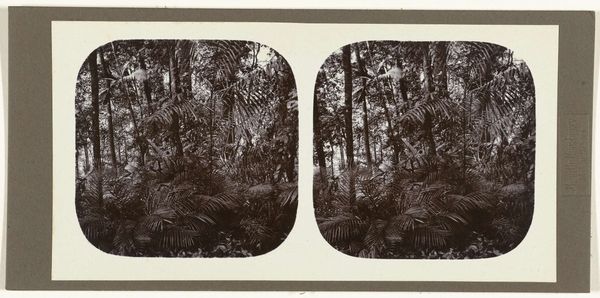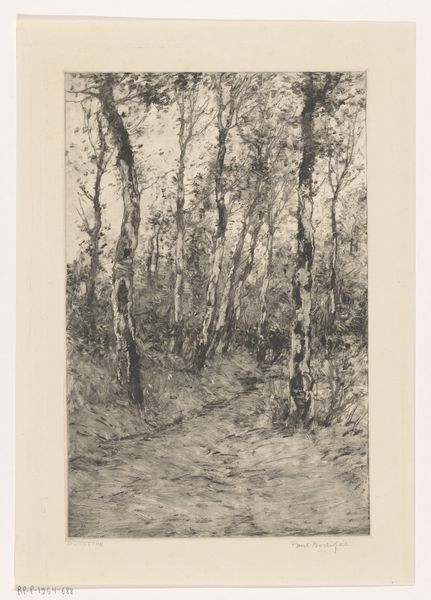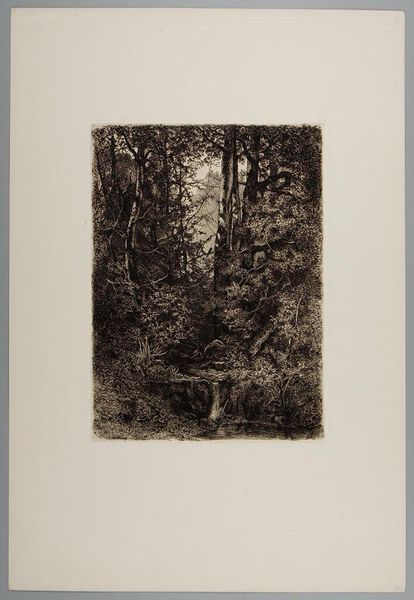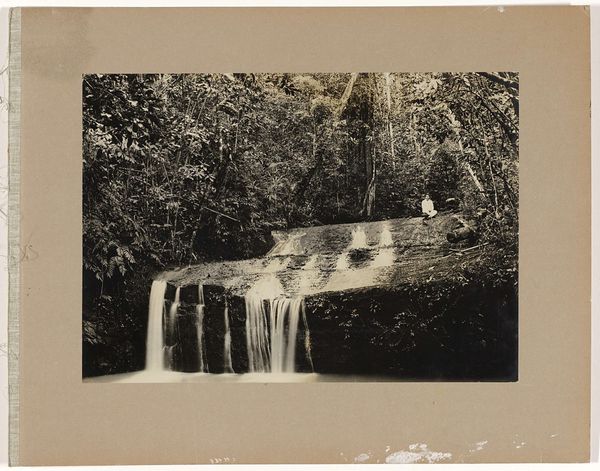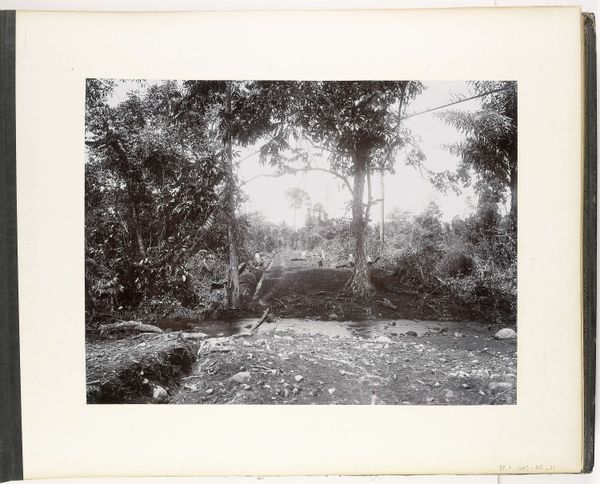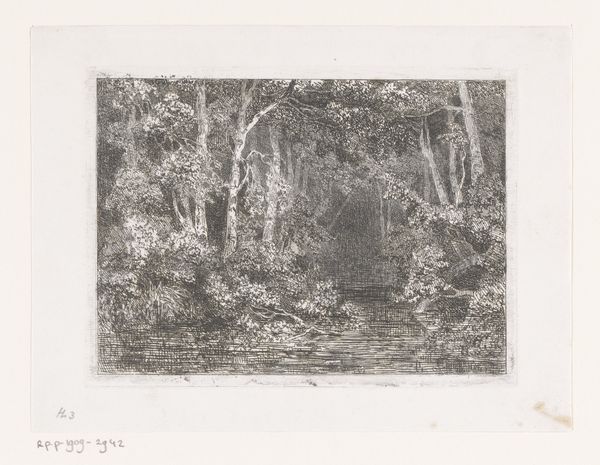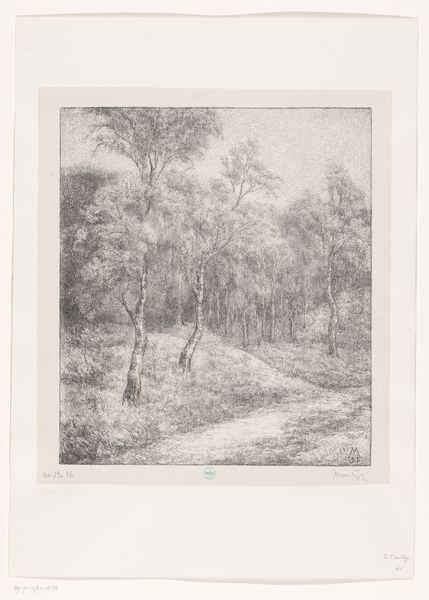
Jongens met paarden op een weg in Tosari, Tenggergebergte, Java, Nederlands-Indië c. 1895 - 1915
0:00
0:00
photography, gelatin-silver-print
#
photo of handprinted image
#
negative space
#
pictorialism
#
landscape
#
photography
#
framed image
#
orientalism
#
gelatin-silver-print
Dimensions: height 167 mm, width 228 mm, height 243 mm, width 329 mm
Copyright: Rijks Museum: Open Domain
Curator: We're looking at "Jongens met paarden op een weg in Tosari, Tenggergebergte, Java, Nederlands-Indië," which translates to "Boys with horses on a road in Tosari, Tengger Mountains, Java, Dutch East Indies." It's a gelatin-silver print from somewhere around 1895 to 1915, credited to Onnes Kurkdjian. Editor: My first impression is one of serene dignity, really. The strong verticals of the trees frame the composition, and the soft light gives it a somewhat painterly, almost staged feel. Curator: Absolutely. Kurkdjian’s work falls into the pictorialist movement, which valued artistic effect over purely documentary photography. This was, after all, during a period of expanding colonial power, and imagery played a vital role in constructing a certain vision of the colonized lands. Editor: I see that. The print itself—a gelatin silver process—is interesting too. It speaks to the global trade of materials, bringing industrial chemistry into rendering an exotic locale. These photographic prints were themselves commodities, circulated among European audiences. Curator: Precisely. The figures—the boys and their horses—are framed not as individuals but as components of this constructed orientalist landscape. The staging isn't candid; it's intended to evoke a particular aesthetic and, arguably, reinforces a power dynamic. Editor: Yes, the controlled tones, the specific attire, the poses—it's about creating an idealized vision, rather than reflecting the complex reality. It makes you consider the labor behind constructing this imagery too. Who selected the location? Who directed the subjects? Curator: And whose gaze does it serve? We, as viewers, inherit that complicated legacy, tasked with critically examining not just what's shown, but the socio-political structures that made it possible. Editor: Looking closely at the photographic surface now, the textures seem almost tactile. This object, this print, once passed through many hands, from its making in the darkroom to its reception and interpretation across social contexts and maybe oceans too. Curator: I agree. Reflecting on this piece underscores how photography, seemingly objective, is always intertwined with the agendas of its time. Editor: And a reminder that understanding art involves acknowledging the complex layers of production and consumption— the material realities.
Comments
No comments
Be the first to comment and join the conversation on the ultimate creative platform.
